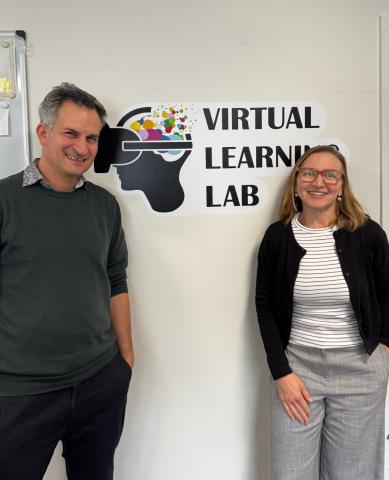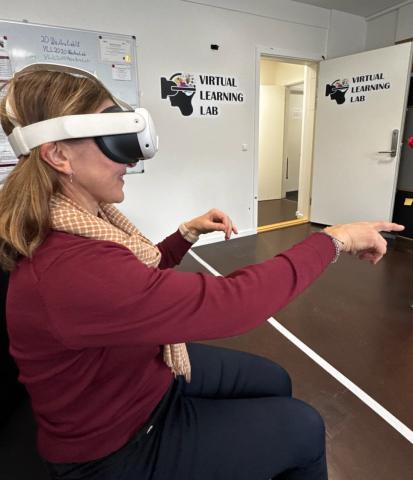


As part of her Early Career Researcher (ECR) Development Fellowship supported by Natural Hazards Research Australia (the Centre), Dr Gabi Mocatta shares her experience of international collaboration in advancing immersive media technologies for natural hazard communication and resilience research.
I’m just back in Australia from a research visit to the University of Copenhagen, the first part of my ECR Development Fellowship with the Centre. The purpose of the fellowship is to explore world-leading research on immersive media technologies for natural hazard communication, preparedness and resilience building. In addition to my time in Denmark, I will also be visiting the iCinema Centre at the University of New South Wales (UNSW) in early 2026 to find out more about their iFire facility, an intelligent fire visualisation system.
For this first part of the fellowship, I was based in the Department of Psychology at the University of Copenhagen. Their Virtual Learning Lab, run by Prof Guido Makransky, is one of Europe’s leading research centres seeking to understand how we learn from immersive virtual reality (VR) experiences. I was able to make connections and build networks not only with VR experts here, but also with teams who have run VR projects for natural hazards visualisations in other parts of Europe. Visiting the Virtual Learning Lab also built my technical understanding of the process of creating immersive technology experiences, enabling me to run an Australian-based project using such technologies in the future.

Photo: Prof Guido Makransky and Dr Gabi Mocatta
During this visit, I also engaged with the interdisciplinary team at the Copenhagen Center for Disaster Research (COPE), making a presentation here on my work to date with the Centre and outlining the ECR Fellowship. I was interested to learn what distinguishes and defines Nordic emergency management styles. The researchers at COPE had a lot to say about high levels of trust in institutions in Nordic societies as a key feature of disaster preparedness and emergency management. My visit to COPE led to some great connections across the university, including an invitation to be an external research supervisor in the climate-driven hazards space, offering new publication opportunities.

Photo: Dr Gabi Mocatta
As well as allowing me to make two invited talks, my visit to the University of Copenhagen has resulted in a co-authored conference submission for the International Communication Association’s 2026 conference about the affordances of immersive technologies for natural hazard communication. With two new colleagues in the Virtual Learning Lab, I also have a paper underway for the journal npj Natural Hazards.
I’m grateful to the Centre for supporting this very productive visit to Europe and am excited about learning and building new collaboration links on my second fellowship visit, at UNSW in 2026.
Learn more about the Centre’s ECR Fellowship opportunities here.